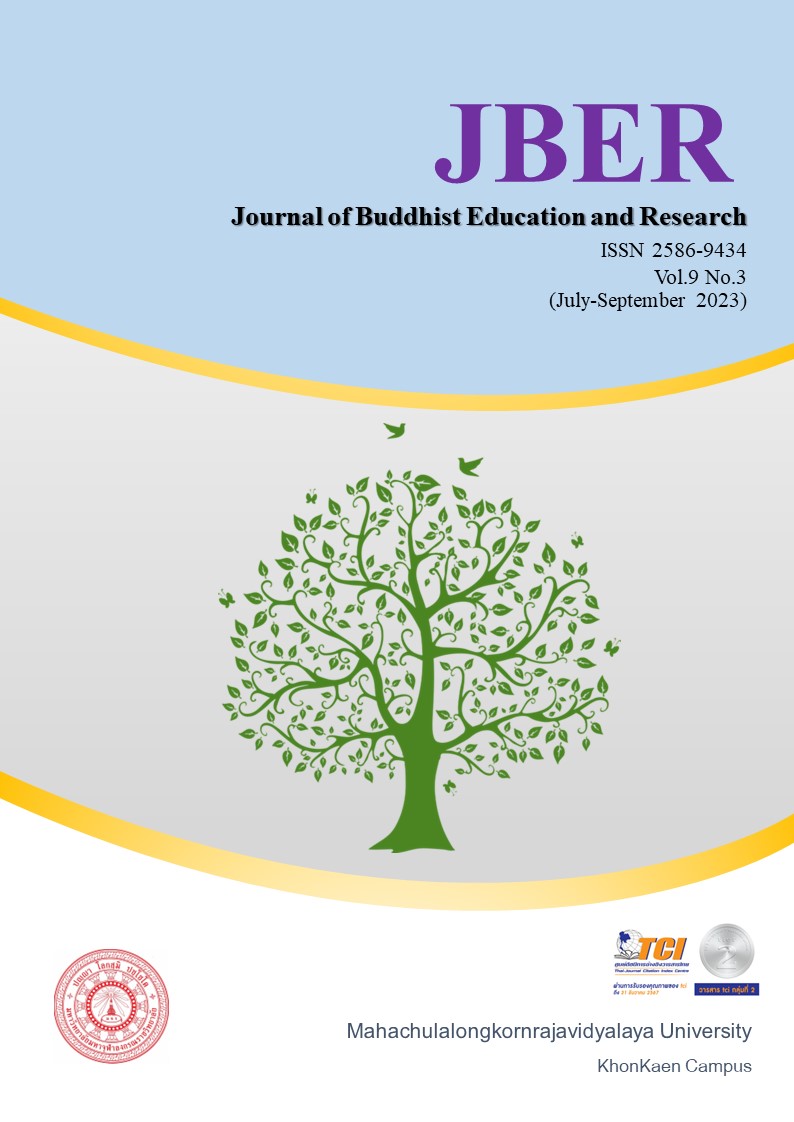THE DEVELOPMENT OF MATHEMATICAL CONCEPTS ON RECTANGLE FOR PRATHOMSUKSA 4 STUDENTS USING VAN HIELE’S THEORY AND VIRTUAL MANIPULATIVE
Keywords:
Van Hiele's Theory, Virtual Manipulatives, Mathematical ConceptsAbstract
The purposes of this research are to study the approach of learning management using virtual manipulatives according to the Van Hiele’s theory to develop mathematical concepts of rectangle for prathomsuksa 4 students, and to study the results of the development of mathematical concepts on rectangular shapes of the prathomsuksa 4 students. The participants were fourty-five prathomsuksa 4.7 students from a large elementary school in Phitsanulok, Thailand. Three-cycle classroom action research (CAR) was applied. Research tools of this study included lesson plans, instructional reflection forms, post-lesson conceptual test, and post-unit conceptual test. The data was analyzed using content analysis.
The research results were found that:
- Guidelines for learning management using virtual manipulatives based on the concept of Van Hiele theory to develop mathematical concept of rectangles of prathomsuksa 4 students should emphasize the design of learning step for fostering the concept gradually, including visualizing, observation of relationships, explication, summarizing concepts and practice the concept.
- Developing mathematical concepts based on Van Hiele's geometric thinking. After each lesson learning management and after three post-learning management. Most students can develop mathematical maneuvers from Level 0, Level 1 to Level 2 from measuring maneuvers after each lesson learning management, and can develop to level 3 from measuring maneuvers after three post-learning management.
References
เกรียงศักดิ์ เจริญวงศ์ศักดิ์. (2549). การคิดเชิงมโนทัศน์ (พิมพ์ครั้งที่ 5). กรุงเทพฯ: ซัคเซสมีเดีย.
ดวงเดือน อ่อนน่วม. (2533). การสอนซ่อมเสริมคณิตศาสตร์. กรุงเทพฯ: จุฬาลงกรณ์มหาวิทยาลัย
ทิศนา แขมมณี. (2547). ศาสตร์การสอน: องค์ความรู้เพื่อการจัดกระบวนการเรียนรู้ที่มีประสิทธิภาพ(พิมพ์ครั้งที่ 3). กรุงเทพฯ: ด่านสุทธาการพิมพ์.
ลาวัลย์ พลกล้า. (2545). เอกสารการสอนชุดวิชาการสอนคณิตศาสตร์. พิมพ์ครั้งที่ 5. กรุงเทพฯ: แสงจันทร์การพิมพ์.
เวชฤทธิ์ อังกนะภัทรขจร. (2552). การศึกษามโนทัศน์ที่คลาดเคลื่อนในวิชาคณิศาสตร์ของนักเรียนชั้น มัธยมศึกษาปีที่ 4 โรงเรียนสาธิต “พิบูลบำเพ็ญ” (วิทยานิพนธ์ปริญญามหาบัณฑิต). ชลบุรี: มหาวิทยาลัยบูรพา.
สมศักดิ์ ประเสริฐมานะกิจ. (2556). การศึกษาผลสัมฤทธิ์ทางการเรียนและระดับขั้นการคิดทางเรขาคณิต เรื่อง ความสัมพันธ์ระหว่างรูปเรขาคณิตสองมิติและสามมิติ ของนักเรียนชั้นมัธยมศึกษาปีที่ 1 โดยการใช้โปรแกรม The Geometer’s Sketchpad ร่วมกับการจัดการเรียนการสอนตามรูปแบบ Van Hiele (วิทยานิพนธ์ปริญญามหาบัณฑิต) นครราชสีมา: มหาวิทยาลัยราชภัฏนครราชสีมา.
สถาบันส่งเสริมการสอนวิทยาศาสตร์และเทคโนโลยี. (2555). ครูคณิตศาสตร์มืออาชีพ เส้นทางสู่ความสำเร็จ. กรุงเทพฯ: 3-คิว มีเดีย.
สิริพร ทิพย์คง. (2558). มโนทัศน์ที่คลาดเคลื่อน ความรู้คณิตศาสตร์ที่ถูกต้อง. กรุงเทพฯ: พัฒนาคุณภาพวิชาการ.
สำเภา เนื่องมัจฉา. (2553). การพัฒนามโนมติทางคณิตศาสตร์ เรื่อง อัตราส่วนตรีโกณมิติ โดยการใช้ตัวนำเสนอเป็นเครื่องมือช่วยในการเรียนรู้ สำหรับนักเรียนชั้นมัธยมศึกษาปีที่ 4 ตามกรอบทฤษฎี ของ van Hiele (วิทยานิพนธ์ปริญญามหาบัณฑิต). ขอนแก่น: มหาวิทยาลัยขอนแก่น.
อัมพร ม้าคนอง. (2546). คณิตศาสตร์: การสอนและการเรียนรู้. กรุงเทพฯ: จุฬาลงกรณ์มหาวิทยาลัย.
_______. (2557). คณิตศาสตร์สำหรับครูมัธยม. กรุงเทพฯ: จุฬาลงกรณ์มหาวิทยาลัย
Cangelosi, J. S. (1996). Teaching mathematics in secondary and middle school: Research based approaches. New York: Merrill.
Haviger & Vojkuvkova. (2014). The van Hiele geometry thinking levels: gender and school type differences. Procedia - Social and Behavioral Sciences 112 (2014) 977–9
Machaba, F.M. (2016). The concepts of area and perimeter: Insights and Misconceptions of Grade 10 learners. Pythagoras, 37(1), a304. http://dx.doi.org/10.4102/pythagoras. v37i1.304
Moyer, P. S., Bolyard, J. J., & Spikell, M. A. (2002). What are virtual manipulatives?. Teaching Children Mathematics, 8(6), 372–377.
Reimer, K., & Moyer, P. S. (2005). Third graders learn about fractions using virtual manipulatives: A classroom study. Journal of Computers in Mathematics and Science Teaching, 24(1), 5–25.





